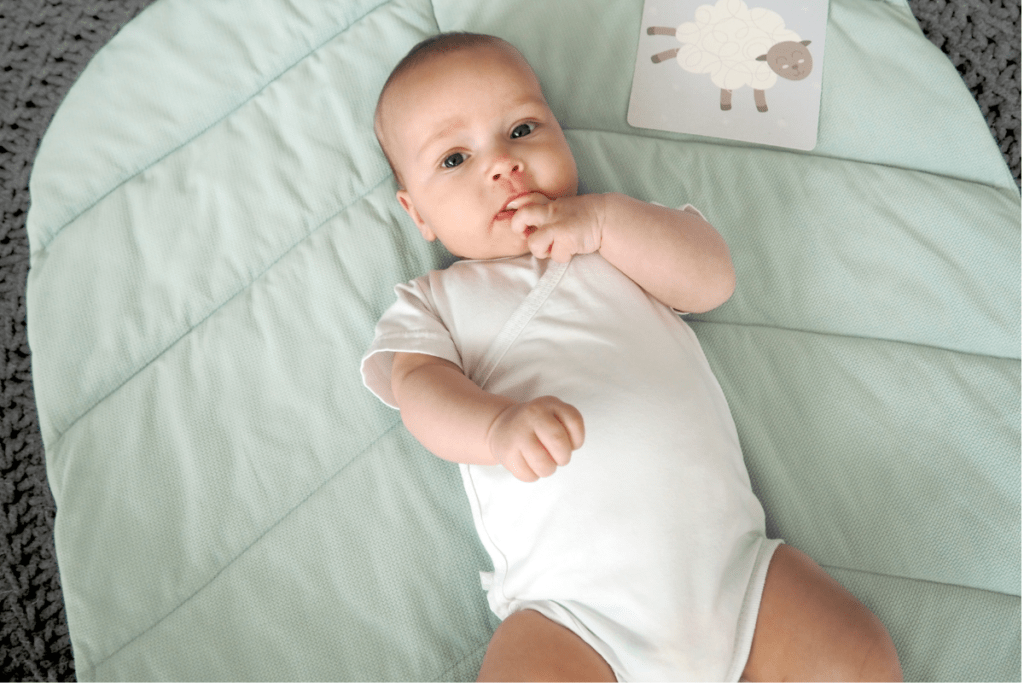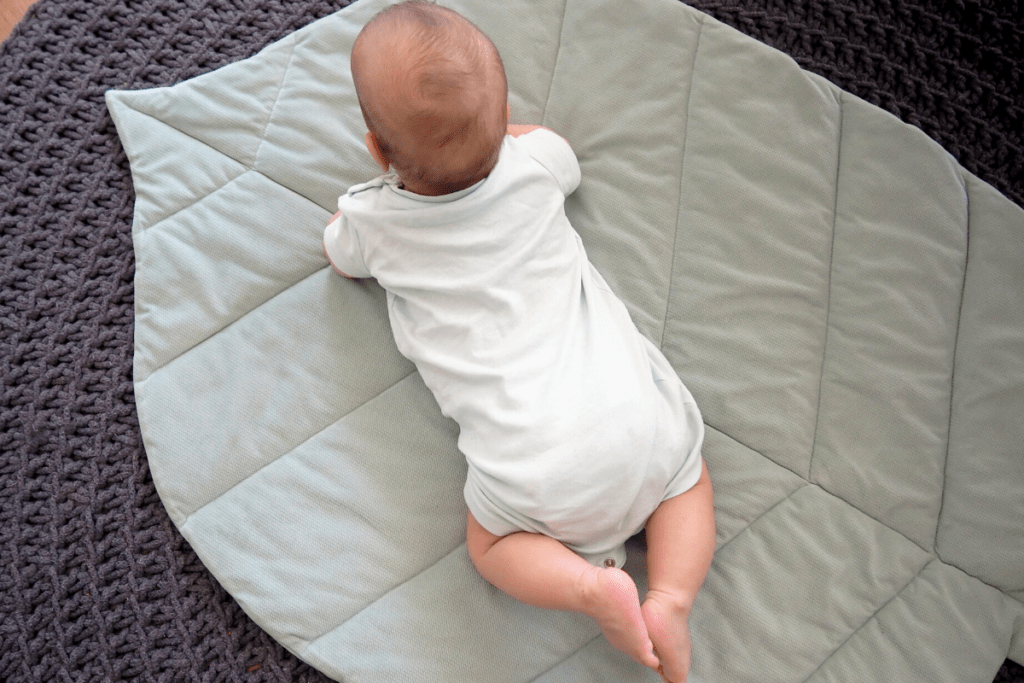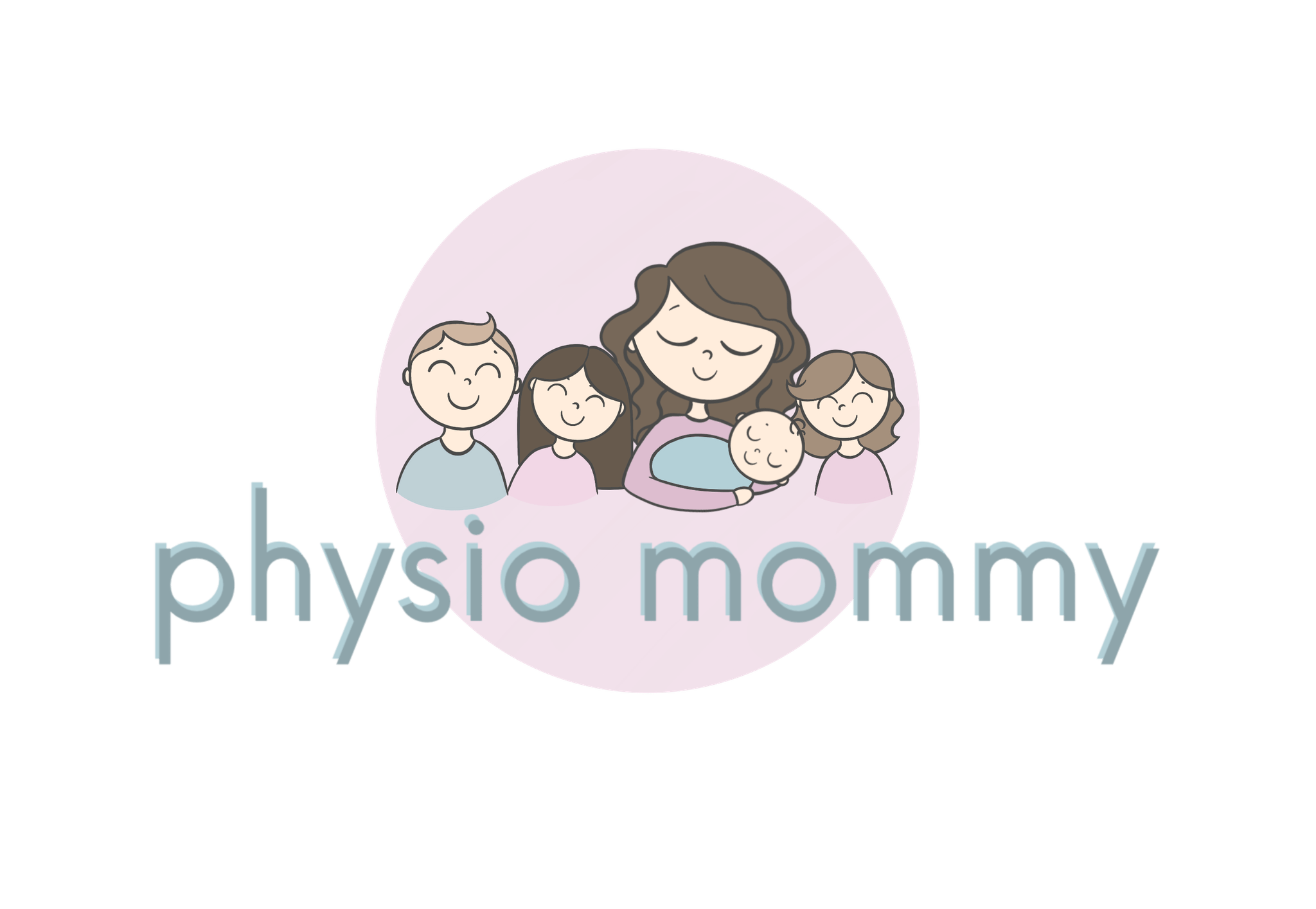Child development
from birth…
through the 3rd month of life
The first three months of life are a time of big change for babies.
First of all, they must cope with all this space that suddenly appeared around them as soon as they were born. It’s a completely new experience compared to the one they had in Mom’s snug belly.
But that’s not the only change. At the moment of birth, gravity starts to affect babies’ bodies in completely different ways than it did before. That is why infants put a lot of effort into learning how to function in these new conditions during the first few weeks of life.

WHEN ON THE BACK:
Newborns never lie symmetrically. When placed on their backs, they lie unsteadily; their heads are always turned to one side. Their arms and legs are bent, and their torsos are arched towards the side they are looking to.
Babies are not yet able to keep their heads centered, but keep turning it from side to side. These movements effect the whole body as babies are unable to make isolated movements.
Babies move in a somewhat chaotic and uncoordinated way. This is because babies’ torsos are weak and cannot sufficiently support and stabilize them.
Over time, this begins to change. At the end of the 3rd month, babies are able to turn their heads or to reach for a toy without engaging the rest of the body. It is also a time when babies begin to achieve symmetry and discover the midline of their bodies. Children lie steadily on the ground, their heads are in line with their torsos, and their hands may be joined at the center of their bodies. Little fingers often land in their mouths. 😉
Babies’ legs are bent and lifted up.

WHEN ON THE TUMMY:
In the prone position, babies initially lie with arms and legs bent sharply. Their body weight rests on one cheek, the upper part of the sternum, the inside of the forearms, and the inside of the knees and feet.
Babies’ bottoms are higher than their heads, which makes it difficult for them to lift and keep their heads up. Babies are usually successful at turning their heads to the right and to the left — but it requires a lot of effort. Over time, when the arms start to reach forward and the legs straighten out, it becomes easier for them to lift their heads and keep them lifted.
At the end of the 3rd month of life, babies master symmetrical propping on the forearms — their torsos are straight, their heads are raised up and can move freely within the range of 180 degrees. In addition, the elbows come under the shoulders, the pelvis rests on the ground, and the legs are freely extended.
What can we expect from a child during the first 3 months of life?
In lying on the back:
- From the end of the 2nd month, the asymmetrical position of the head and torso gradually disappears, to be replaced with symmetry. At the end of the 3rd month of life, children should be able to maintain body symmetry (nose, chin, sternum, and navel are all in line).
- Around the 2nd month of life, the so-called social smile appears — children respond to a smile with a smile.
- At the end of the 3rd month of life, infants lie steadily upon a surface with legs bent and knees raised up. Their hands come together in front of their chests. The children can play with them and put them in their mouths.
- hand-eye coordination develop further. Babies are able to focus their eyes on an object and follow a toy within their field of vision.
In lying on the belly:
- At the end of the 3rd month of life, the children finally achieve symmetrical forearm support. Their elbows now also come under the shoulders and the legs are straightened out.
- The children are able to maintain this position for a long time, and can easily turn their heads both to the right and to the left.
What should raise a red flag?
- If, during the very first days of life, your baby raises his or her head very high when placed on the tummy — and often rolls over from belly to back.
- Your baby always turns his or her head to one side only, or the head starts to flatten.
- At the end of the 3rd month of life, your child still lies asymmetrically on his or her back. While on the tummy, the child cannot support his or her body symmetrically on the forearms. As a result, the baby often gets nervous and cries, one or both arms are pulled back, or the baby’s pelvis does not rest well on the ground (it tends to be raised).
- Your child seems to have trouble focusing his or her eyes on a toy and following it visually at the end of the 3rd month. Eye contact with the baby is difficult and he or she might look at you hazily. The so-called “reflex smile” has not disappeared after the end of the 2nd month of life.
- When lying on the back, your child crosses straightened legs; and, after 3 months of age, your baby does not extend his or her arms over the body and does not join them at the midline. Instead, the arms just lie on the ground. The child puts only one — and always the same — hand in his or her mouth.
- Your child seems to be stiff all the time. At 3 months of age, he or she still clenches the fists tightly — with the thumb usually tucked inside.
- Your child shows very little activity. He or she lies inertly upon a surface with legs set wide apart in a frog-like position.


